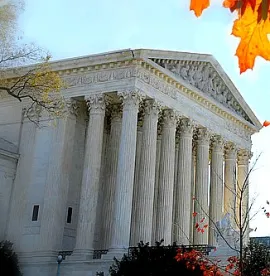On April 23, 2020, the U.S. Supreme Court unanimously held in Romag Fasteners, Inc. v. Fossil Group, Inc., 590 U.S. ___ (2020), that the Lanham Act does not impose a “willfulness” prerequisite for awarding profits in trademark infringement actions.
Disgorgement of a defendant’s profits has long been a critical remedy available to brand owners seeking remediation for the infringement of its trademarks. A profits award can be a proxy for the actual damages suffered by the trademark owner, as actual damages are often very difficult to prove in trademark cases. Profits awards also serve to deprive infringers of their unjust gains, and can be an important deterrent against infringing activities. Some federal courts have considered an infringer’s intent as a factor, but not a prerequisite, to awarding a defendant’s profits to the prevailing plaintiff. Other courts have required proof that the defendant’s infringement was willful before awarding damages measured by its profits, complicating the availability of this important trademark infringement remedy in certain jurisdictions.
The U.S. Supreme Court has resolved this split, finding that a categorical rule requiring a showing of willfulness cannot be reconciled with the statute’s plain language. Accordingly, prevailing trademark owners do not have to prove willfulness to be awarded the infringer’s profits.
Background
The parties had an agreement allowing Fossil to use Romag’s fasteners in Fossil’s handbags and other products. Romag discovered that the factories Fossil hired in China to make its products were using counterfeit Romag fasteners. Unable to resolve its concerns amicably, Romag sued, alleging that Fossil had infringed its trademark and falsely represented that its fasteners came from Romag.
The U.S. District Court for the District of Connecticut found Fossil liable, and the jury awarded Romag $6.7 million of Fossil’s profits to “deter future trademark infringement.” The trial court overturned the jury’s damages award because the jury found Fossil acted “callously,” rather than “willfully,” as required by the controlling Second Circuit precedent for a profits award. The U.S. Court of Appeals for the Federal Circuit affirmed the district court’s decision, and the U.S. Supreme Court vacated that judgment and remanded for further proceedings consistent with its opinion.
Overview of Court’s Opinion
Section 15 U.S.C. §1117(a) of the Lanham Act, which governs remedies for trademark violations, states:
When a violation of any right of the registrant of a mark registered in the Patent and Trademark Office, a violation under section 1125(a) or (d) of this title, or a willful violation under section 1125(c) of this title, shall have been established . . . , the plaintiff shall be entitled, subject to the provisions of sections 1111 and 1114 of this title, and subject to the principles of equity, to recover (1) defendant’s profits, (2) any damages sustained by the plaintiff, and (3) the costs of the action. (Underlined emphases added).
Although acknowledging that a defendant’s mental state is a highly important consideration in determining whether a profits award is appropriate, the Court rejected the categorical rule applied in certain lower courts (including controlling Second Circuit precedent) that a plaintiff can win a profits award only after proving that the defendant willfully infringed its trademark. The Court relied on the plain language in 15 U.S.C. §1117(a) to find that Congress intended to limit such willfulness precondition to a profits award in a suit under Section 1125(c) for trademark dilution. It rejected Fossil’s position that the phrase “subject to the principles of equity” in Section 1117(a) should be read as imposing a willfulness requirement, especially given that Congress prescribed a “willfulness” requirement elsewhere in the very same statutory provision. In no uncertain terms, the Court noted that “the statutory language has never required a showing of willfulness to win a defendant’s profits” in claims under Section 1125(a) for false or misleading use of trademarks (i.e., trademark infringement).
Conclusion
The Court’s decision resolves a split amongst the lower courts and preserves a critical deterrent against trademark infringement by clarifying that Congress intended to allow a trademark owner to recover a defendant’s ill-gotten profits, regardless of whether such infringement was willful.




 />i
/>i

